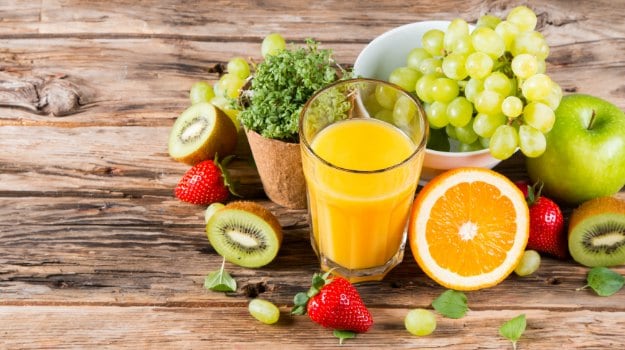I sadly but definitely annoy my children when I launch into my nutrition talk. As soon as I utter the words "protein" or "healthy," the responses I usually get is glassy eyes and expressions indicating they'd rather be anywhere else.So you can imagine how pleased I was when one of my boys recently chowed down on a few extra clementines because he believed he was catching a cold and needed the extra vitamin C. Perhaps, behind those glassy-eyed stares, he was actually listening.Explaining the importance of vitamins to children is more complex than describing the protein, carbohydrates and fats that provide direct fuel for the body. All 13 vitamins have countless functions that largely guarantee the body operates optimally. Without vitamins, our immune system wouldn't fight colds, our wounds wouldn't heal, our bones would break, our eyes wouldn't focus properly and we wouldn't optimally digest the foods we eat. And that is just the beginning.
Vitamins fall into two camps depending upon how the vitamin is absorbed in the body: water-soluble and fat-soluble. Water-soluble vitamins (vitamin C and the B vitamins) dissolve in water, circulate in the blood and bodily fluids and are not stored; they leave the body through the urine, so they need to be regularly replaced through the foods we eat. Fat-soluble vitamins (A, D, E and K) require dietary fat for optimal absorption and are stored in assorted tissues.According to the Environmental Working Group, many American children, especially teenage girls, are deficient in vitamins D and E, among others. So should a parent supplement?Not necessarily. A child can certainly consume the recommended daily allowance of all 13 vitamins by eating meals such as these (and getting a little sunshine!):- Breakfast: two scrambled eggs, one slice of whole grain toast and a fruit smoothie.- Snack: carrots, celery and apple slices dipped in almond butter.- Lunch: sesame noodles with sliced chicken, sugar snap peas and an orange.- Snack: yogurt, nut and fruit parfait.- Dinner: salmon, brown rice and sauteed spinach.Ideally, the body would gather everything it requires through whole foods such as these. Each whole food provides a combination of nutrients and elements that help us digest, absorb and use it to the fullest capacity. For instance, an avocado offers the healthful fats needed to absorb the fat-soluble vitamin E in the avocado. Chicken provides both protein and the B vitamins needed to help digest that protein. Spinach provides iron and the Vitamin C that helps the body absorb the iron. And broccoli provides the fiber needed to digest and absorb its many vitamins and minerals. Taking a supplement is not a flawed approach if a child is truly deficient, but whole foods are generally a better choice.My children stop paying attention to what I preach after a few sentences, so next time I find myself wanting to launch into another monologue on vitamins, and I see their eyes glaze, I think I'll just leave it at "let's eat."© 2015 The Washington Post
Vitamins fall into two camps depending upon how the vitamin is absorbed in the body: water-soluble and fat-soluble. Water-soluble vitamins (vitamin C and the B vitamins) dissolve in water, circulate in the blood and bodily fluids and are not stored; they leave the body through the urine, so they need to be regularly replaced through the foods we eat. Fat-soluble vitamins (A, D, E and K) require dietary fat for optimal absorption and are stored in assorted tissues.According to the Environmental Working Group, many American children, especially teenage girls, are deficient in vitamins D and E, among others. So should a parent supplement?Not necessarily. A child can certainly consume the recommended daily allowance of all 13 vitamins by eating meals such as these (and getting a little sunshine!):- Breakfast: two scrambled eggs, one slice of whole grain toast and a fruit smoothie.- Snack: carrots, celery and apple slices dipped in almond butter.- Lunch: sesame noodles with sliced chicken, sugar snap peas and an orange.- Snack: yogurt, nut and fruit parfait.- Dinner: salmon, brown rice and sauteed spinach.Ideally, the body would gather everything it requires through whole foods such as these. Each whole food provides a combination of nutrients and elements that help us digest, absorb and use it to the fullest capacity. For instance, an avocado offers the healthful fats needed to absorb the fat-soluble vitamin E in the avocado. Chicken provides both protein and the B vitamins needed to help digest that protein. Spinach provides iron and the Vitamin C that helps the body absorb the iron. And broccoli provides the fiber needed to digest and absorb its many vitamins and minerals. Taking a supplement is not a flawed approach if a child is truly deficient, but whole foods are generally a better choice.My children stop paying attention to what I preach after a few sentences, so next time I find myself wanting to launch into another monologue on vitamins, and I see their eyes glaze, I think I'll just leave it at "let's eat."© 2015 The Washington Post
Advertisement
For the latest food news, health tips and recipes, like us on Facebook or follow us on Twitter and YouTube.
Tags:






